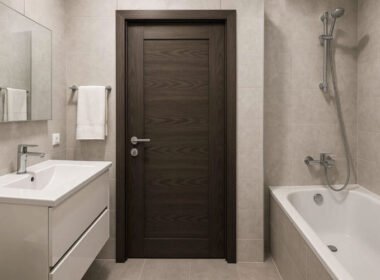Precast concrete pits have become a preferred solution in modern infrastructure and construction projects, especially for stormwater management, electrical enclosures, and communications, notes Yourway Properties Inc, a leading property management team.
Whether it’s a civil development, residential project, or a commercial site, precast pits offer an efficient, reliable, and cost-effective alternative to traditional in-situ methods. Here are seven compelling reasons why precast concrete pits should be considered for your next project.
1. Time-Saving Installation
One of the most significant advantages of precast concrete pits is the time they save on-site. Because the units are manufactured off-site and delivered ready to install, there’s no need for time-consuming formwork, curing, or waiting around for materials. This is particularly beneficial for projects with tight deadlines or when working in areas where extended site occupation is not feasible. Fast installation can also mean fewer disruptions and reduced labour costs.
2. Consistent Quality and Strength
Since precast concrete pits are manufactured in a controlled factory environment, the quality of each unit is consistent and reliable. This controlled setting allows for better management of factors like mix design, temperature, and curing times, resulting in high-strength concrete that meets or exceeds industry standards. This level of consistency is difficult to achieve with on-site construction, where environmental conditions can vary significantly.
3. Durability and Longevity
Precast concrete is renowned for its durability, making it ideal for long-term applications. These pits are designed to withstand heavy loads, harsh weather, and corrosion over time. They are particularly well-suited for stormwater and electrical applications, where they are regularly exposed to moisture and other environmental stressors. The durability of precast concrete means less maintenance over the life of the product, reducing long-term costs and resource use.
4. Range of Sizes and Configurations
Every project has different needs, and precast concrete pits come in a wide range of sizes and shapes to suit them. Whether it’s a small electrical pit or a large stormwater drainage system, there are standard options readily available, and many manufacturers can offer custom solutions. Accessory compatibility—such as risers, grates, and covers—makes it easy to create complete systems without complicated adjustments on-site.
5. Improved Safety on Site
Using precast pits can improve overall safety during construction. Because they arrive on-site fully formed and ready for installation, there is less handling of raw materials, fewer workers involved in hazardous tasks like formwork or concrete pouring, and reduced exposure to dust and noise. Additionally, because installation is faster and more predictable, it’s easier to manage logistics and ensure the site remains safe and organised.
6. Eco-Friendly Choice
Precast concrete pits offer several environmental benefits. The off-site manufacturing process allows for better waste management and resource efficiency. Leftover materials can often be reused or recycled within the production facility, and the energy used during production is generally lower than that required for on-site mixing and pouring. Additionally, the longevity of precast concrete means fewer replacements and less environmental impact over time.
7. Lower Overall Project Costs
While the upfront cost of precast pits may be similar or slightly higher than in-situ options, the savings quickly add up. Reduced installation time, lower labour requirements, minimal maintenance, and increased durability all contribute to lower total costs across the life of a project. For large-scale developments or infrastructure works, this can mean significant savings in both time and money.
Conclusion
Precast concrete pits offer a smart solution for a wide variety of construction and infrastructure needs. Their consistency, durability, and efficiency make them a dependable option for engineers, contractors, and developers alike. Whether you’re managing stormwater, electrical, or communications infrastructure, choosing precast concrete can deliver long-term benefits that go beyond the construction phase.










